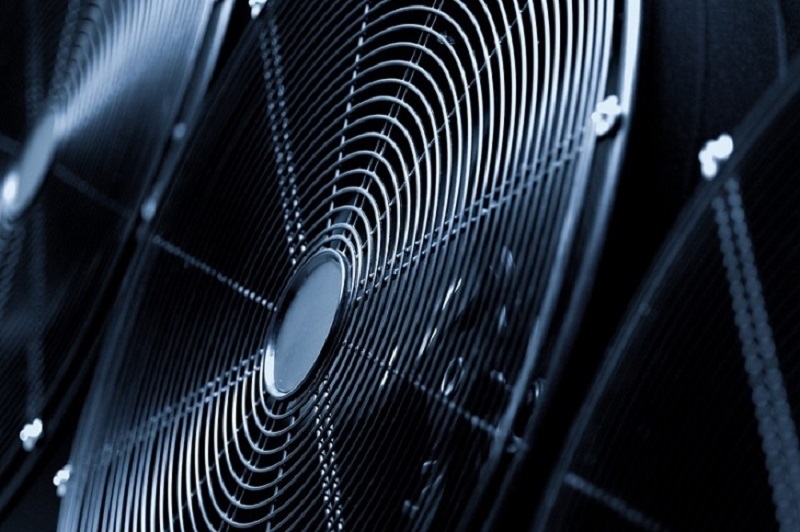Isn't it fascinating how the everyday things we take for granted garner little attention to their technological evolution? One such everyday object is the industrial fan. Most of us barely notice them, and yet, they play a crucial role in our daily lives. From keeping our environments comfortable to aiding in industrial processes, these useful tools are evolving at an impressive pace. So, what advancements have occurred in industrial fan technology recently? What has spurred these changes, and how do they benefit us?
Digging into the world of industrial fans might not sound glamorous, but as with all elements of home improvement, interior design, and architecture, there is a story worth telling hidden within. This blog post sets out to unravel these intriguing narratives, offering a fresh perspective and a comprehensive overview of what's new and exciting in the realm of industrial fans.
Through this detailed exploration, we aim to understand and appreciate the developments in industrial fan technologies, the minds behind these changes, and how these advancements influence our present and future realities. Are you ready to delve into the alluring world of swirling blades and cool breezes? Let’s embark on this journey together.
The Leap from Traditional to Modern
Remember when the industrial fan was merely a piece of metal wired up to a motor? Those days are behind us. The modern industrial fan is steeped in intricate technologies, loaded with features that not only enhance performance but also ensure improved energy efficiency and reduced environmental footprint.
The key driver behind this leap has been the push for sustainability. With industries worldwide aiming to lower their carbon footprint, energy-efficient industrial fans have taken centre stage. Innovations like custom blade design and smart control systems are examples of trims observed in contemporary fan technology.
Beyond the drive for sustainability, enhanced functionality and user comfort also spearhead these technological changes. Noise reduction features, variable speed regulation, and remote-controlled operation are a few examples how modern industrial fans impress users.
More Than Just Blades - Intelligent Fan Design
Our understanding of aerodynamics, fluid motion and computational modelling has significantly improved over the past decades. These advancements have directly impacted industrial fan designs, transforming them from simple air-moving devices into sophisticated energy-saving solutions.
Intelligent fan design now takes into consideration factors such as blade curvature, mounting configurations, operating conditions, and many more. CFD (Computational Fluid Dynamics) is often employed to simulate airflow, pressure and temperature distributions which help design more efficient fans.
This approach allows engineers to customise fan design for specific applications, optimising performance while conservely energy. As a result, we see industrial fans that are more effective, efficient and perfectly tailored to fit into a wide array of environments.
Commanding the Air – Smart Control Systems
The inclusion of smart control systems in industrial fans marks another major advancement.
These technologically advanced systems enable users to exercise greater control over their fans' operation, adjusting speed, direction, and other functionalities based on their specific needs.
With the integration of IoT (Internet of Things) into these control systems, users can command their industrial fans remotely via smartphone applications or automated systems. This means that fans can respond to changes in temperature, humidity or even motion, offering unparalleled convenience and versatility.
Furthermore, smart control systems often come with power consumption monitoring features, allowing users to keep track of their energy usage. This accessibility not only enables effortless control over the airflow but also allows industries to push forth with their sustainability goals.
Pros and Cons of Advancements in Industrial Fan Technology
Like all advancements, the evolution of industrial fan technology also presents a mix of benefits and challenges. The key advantages include energy efficiency, flexibility of use, and improved performance. Design enhancements have led to lower energy consumption, higher airflow capacities, lowered noise levels, and better durability.
However, these advancements also bring a few drawbacks to the table. The increased sophistication of these fans has led to higher upfront costs. Moreover, the inclusion of complex systems requires more regular maintenance and the potential for more technical issues.
The Future of Industrial Fan Technologies
Given the current pace of advancement, the future of industrial fan technologies appears both exciting and promising. The continued focus on energy efficiency, reduction of noise levels, and the integration of smart technologies will continue to shape the evolution of these devices.
In particular, innovations in materials like magnetic bearings for frictionless movement, more efficient motors, and the implementation of AI for smarter controls are areas to watch for in the coming years.
Conclusion
The humble industrial fan has come a long way. From simple devices designed to move air, they have morphed into cutting-edge technology pieces that bring efficiency, control and enhanced functionality to the table. The technological advancements we’ve seen in recent years not only reflect our increasing commitment to sustainability but also our constant quest for comfort and convenience.
While challenges persist, the potential for futuristic designs and more advanced technologies point towards a positive trajectory. As our understanding of aerodynamics and control systems improves, so does the evolution of industrial fans. What does the future hold? Only time will tell. But for now, it's safe to say that the breeze of innovation in industrial fan technology isn't calming down anytime soon.
